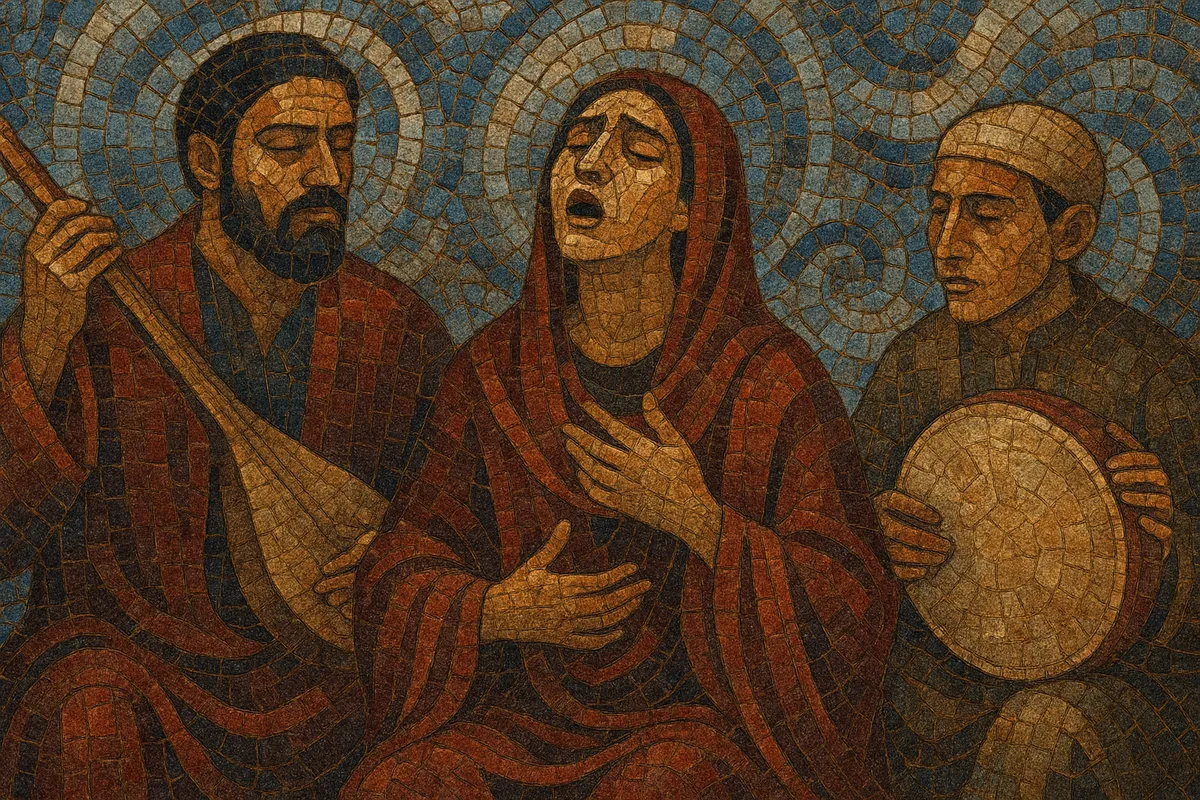Falak is a vocal-centered folk tradition from Tajikistan whose name, derived from Persian, literally means “the firmament” or “fate.” True to its name, the genre is defined by lyrics that meditate on destiny, longing, exile, and the fragility of human life. Performances are often emotionally charged, with a high, ringing vocal tessitura and melismatic ornamentation that convey intense pathos.
Musically, Falak sits at the intersection of rural Tajik folk practice and the broader Persianate maqam world. Singers are commonly accompanied by long‑necked lutes (such as dutar or tanbur), the spike fiddle ghijak, and the frame drum doira. Pieces often move from a flexible, rubato introduction into a more rhythmically regular section once percussion joins, and they draw on modal sensibilities related to regional maqam/shashmaqam practice while maintaining a distinctly local timbre and poetic ethos.
Falak emerged in the mountainous and southern regions of Tajikistan during the 19th century, though its roots almost certainly reach further back in oral tradition. The term “falak” (fate/firmament) reflects the repertoire’s preoccupation with destiny, loss, and spiritual endurance, drawing from Persian/Tajik poetic forms and Sufi-inflected imagery.
Historically performed by village singers and itinerant bards, Falak developed as a solo vocal art supported by a small acoustic ensemble—dutar or tanbur, ghijak, and doira. Its melodic language resonates with the regional maqam ecology (especially shashmaqam), yet it remains distinctly rustic and personal, favoring high-register, melismatic singing and improvisatory preludes that transition into measured, beat-driven sections.
In the Soviet period, Tajik cultural institutions began documenting and staging Falak, forming ensembles that brought the style into concert halls and radio. While this introduced staged aesthetics and standardized arrangements, it also preserved repertoires, instruments, and performance techniques that might otherwise have remained localized and fragile.
After Tajikistan’s independence, Falak experienced renewal, with master singers (ustods) mentoring younger performers and new ensembles presenting both traditional and contemporary arrangements. In the 21st century, national festivals, conservatory programs, and recordings have further solidified its status, culminating in international recognition (including UNESCO intangible heritage inscription for Falak of Tajikistan), which has supported preservation and transmission.
Today, Falak continues to evolve: artists blend traditional instruments with modern staging, film scores, and cross-cultural collaborations. Despite these innovations, the genre’s core remains a poignant vocal art that gives voice to themes of fate, patience, and hope in the face of hardship.


